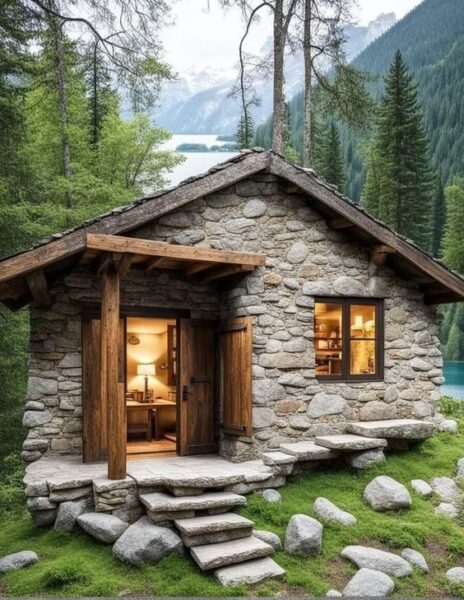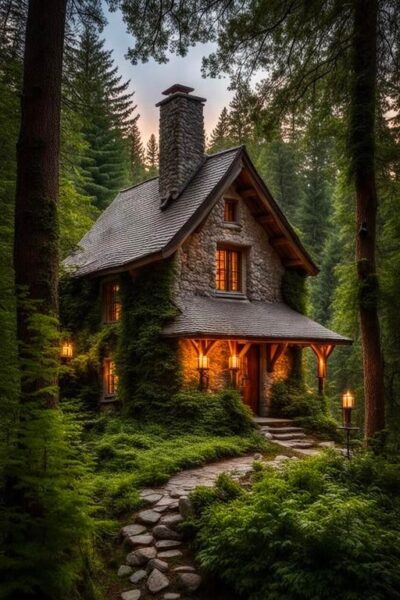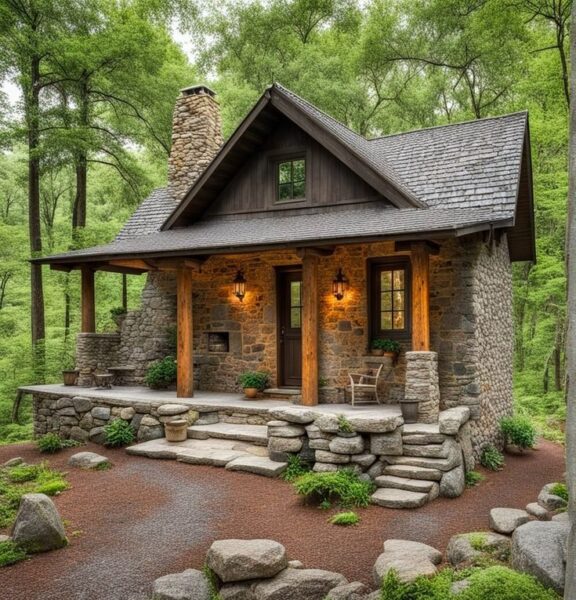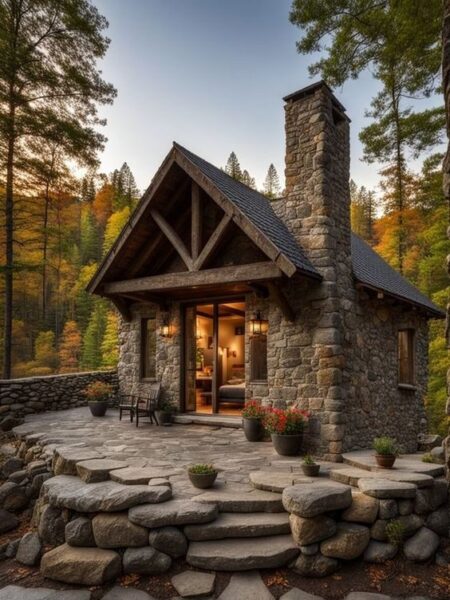Introduction: Stone cabins evoke a sense of rustic charm, blending seamlessly with their natural surroundings while offering a cozy refuge from the hustle and bustle of modern life. Yet, within this seemingly simple architectural style lies a world of intricate design elements that elevate these structures into works of art. In this exploration, we delve into the complexities of stone cabin design, uncovering the nuances that contribute to their unique aesthetic appeal.

Historical Context: The roots of stone cabin architecture trace back centuries, finding inspiration in ancient dwellings crafted from locally sourced materials. From the rugged stone cottages of the English countryside to the sturdy mountain lodges of the Alps, each region has contributed its own distinct style to the evolution of stone cabin design. Over time, architects and builders have refined these techniques, integrating modern innovations with traditional craftsmanship to create contemporary masterpieces.

Materials and Construction: Central to the allure of stone cabins is the raw beauty of their primary material: stone. Whether hewn from quarries or gathered from the surrounding landscape, each stone bears the mark of its origins, imbuing the structure with a sense of authenticity. Craftsmen employ various techniques to manipulate these stones, from dry stacking to mortaring, ensuring structural integrity while accentuating the natural textures and colors of the materials.

Beyond the stones themselves, other elements play crucial roles in the construction of stone cabins. Timber frames provide support and add warmth to the interiors, while expansive windows frame picturesque views and flood the spaces with natural light. Roofing materials range from traditional thatch to sleek metal, each contributing to the overall aesthetic and functionality of the design.
Design Principles: At the heart of stone cabin design lies a delicate balance between form and function. Architects carefully consider factors such as site orientation, climate, and local building traditions to create harmonious structures that blend seamlessly with their surroundings. From the sweeping curves of a thatched roof to the intricate detailing of a hand-carved doorway, every aspect of the design serves a purpose, both practical and aesthetic.

One of the defining features of stone cabins is their integration with nature. Large, unobstructed windows invite the outdoors in, blurring the boundaries between interior and exterior spaces. Courtyards and terraces provide opportunities for outdoor living, while landscaping elements such as native plants and stone pathways further enhance the connection to the natural environment.
Interior Design: Inside the stone cabin, a world of comfort and coziness awaits. Interiors are characterized by warm wood tones, rugged stone accents, and inviting furnishings that beckon inhabitants to relax and unwind. Open floor plans promote a sense of spaciousness, while exposed beams and vaulted ceilings add architectural interest.

Fireplaces serve as focal points, both visually and functionally, providing warmth and ambiance on chilly evenings. Cozy nooks and alcoves offer retreats for reading or contemplation, while communal spaces encourage gatherings and socializing. Throughout the interior, attention to detail is paramount, with every fixture and finish contributing to the overall aesthetic cohesion.

Innovations and Modern Interpretations: While rooted in tradition, contemporary stone cabin design is not bound by history. Architects and designers continue to push the boundaries of what is possible, incorporating innovative materials and technologies to create structures that are both timeless and forward-thinking. Green building practices, such as passive solar design and rainwater harvesting, are increasingly common, reflecting a growing awareness of environmental sustainability.

Modern interpretations of stone cabins may feature sleeker lines and minimalist interiors, yet they retain the essential elements that define the genre. Advanced construction techniques, such as prefabrication and modular construction, offer efficiency without compromising quality or character. The result is a new generation of stone cabins that honor the past while embracing the future.
Conclusion: In the world of architecture, stone cabins stand as enduring testaments to the power of simplicity and craftsmanship. From their humble origins to their present-day incarnations, these structures continue to captivate and inspire with their timeless beauty and intricate design elements. Whether nestled in the heart of the countryside or perched atop a rugged mountain slope, stone cabins offer a glimpse into a world where artistry and nature converge in perfect harmony.
